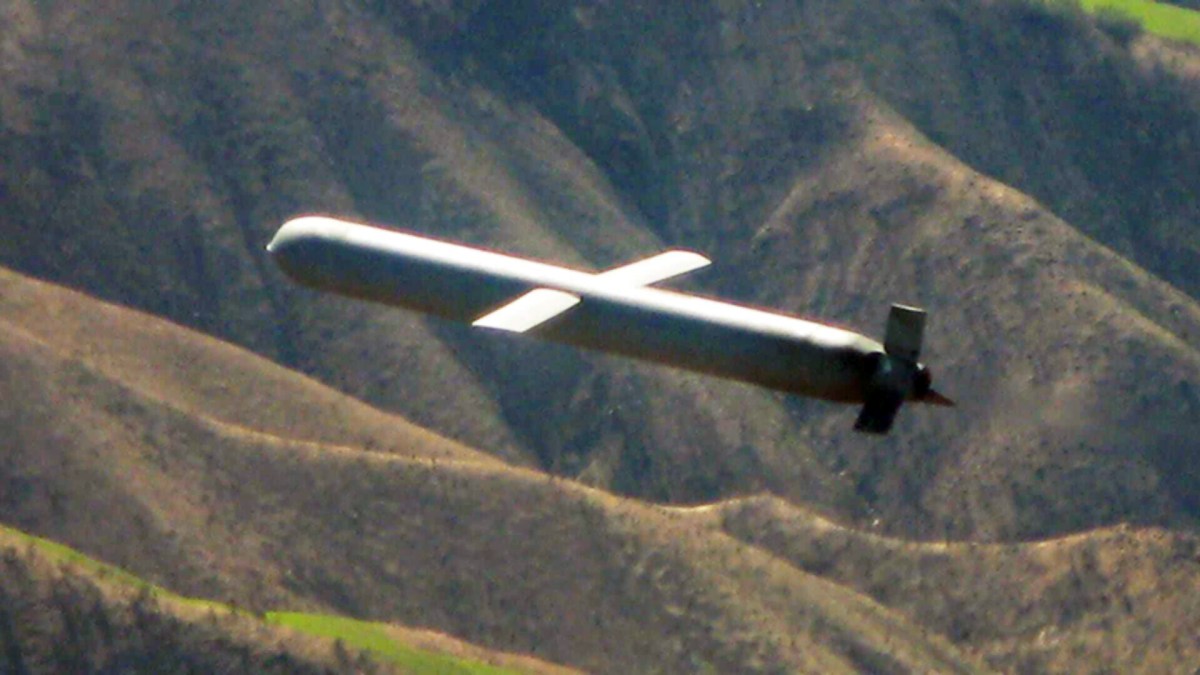The TWZ Newsletter
Weekly insights and analysis on the latest developments in military technology, strategy, and foreign policy.
Russian President Vladimir Putin on Friday offered his latest take on the prospect of Ukraine receiving Tomahawk Land Attack cruise missiles (TLAMs) from the United States. During a press conference, the Russian leader also hinted that his country would soon introduce a new nuclear weapon.
Asked his response to whether the U.S. is using the provision of Tomahawks to Ukraine as a bargaining chip in the sputtering peace talks, the Russian leader offered a terse answer.
“Our response is strengthening the air defense system of the Russian Federation,” Putin explained. He offered no further details. After nearly four years of war and Ukraine’s expanded long-range attacks deep inside the country, drastically broadening the demand for counter-air systems, Russia’s air defenses are already stretched very thin.
🤡Russia will respond to Ukraine’s threats to strike with Tomahawks by strengthening its air defense system, Putin says. pic.twitter.com/3B572dZwVE
— 🪖MilitaryNewsUA🇺🇦 (@front_ukrainian) October 10, 2025
Putin’s response today was far less vitriolic than what he said earlier in the week about these weapons.
“This will lead to the destruction of our relations, or at least the positive trends that have emerged in these relations,” Putin said in a video clip released on Sunday by Russian state television reporter Pavel Zarubin.
Putin on Friday seemingly changed his tone. He suggested that the negotiations to end the war in Ukraine between him and Trump that took place during their Alaska meeting in August are indeed ongoing.
“Well, you see, we did not reveal what exactly was discussed during the Anchorage meeting,” Putin stated. “We said that there is a general understanding from the United States and an understanding of the Russian side about where we can move and what can be done to resolve this conflict through peaceful means, and those are not simple issues.”
The Russian leader said he and Trump both agreed to “think about this issue” with their respective government officials.
“This is a complicated set of questions that requires a thorough review, but we’re still grounded in that discussion that took place in Anchorage,” Putin explained. “We don’t change anything here, and we still believe there is work to be done on all other sides, but we’re still within the framework of the agreements reached in Alaska.”
Putin said the results of the talks with President Trump in Alaska are assessed positively and remain in effect.
“I would like to inform you in more detail on the results, which we generally assess positively, and, of course, our subsequent work on resolving the conflict in… https://t.co/BSNRPqZybI pic.twitter.com/4HW70wOdls
— Anton Gerashchenko (@Gerashchenko_en) October 10, 2025
Trump is mulling allowing Kyiv to have TLAMs out of frustration with Russia’s continued attacks on Ukraine and Putin’s unwillingness to agree to a ceasefire. Earlier this week, Trump fanned speculation about this by saying he “sort of made a decision” about selling some to NATO countries to distribute to Ukraine.
“Where they are sending them, I guess I will have to ask that question,” Trump added. “I would ask some questions. I am not looking to see an escalation.”
We reached out to the White House for comment about Putin’s latest statement as well as the status of the Tomahawk decision and will update this story with any pertinent response.
When it comes to escalation, Russian media earlier this week reported a suggestion that missiles be sent to Cuba should Ukraine get TLAMs. It comes in the wake of this week’s ratification of a military cooperation treaty between Moscow and Havana.
A “military expert” told the official Russian news agency TASS that Russia should consider sending Iskander operational-tactical missile systems and the Oreshnik medium-range ballistic missile systems to Cuba.
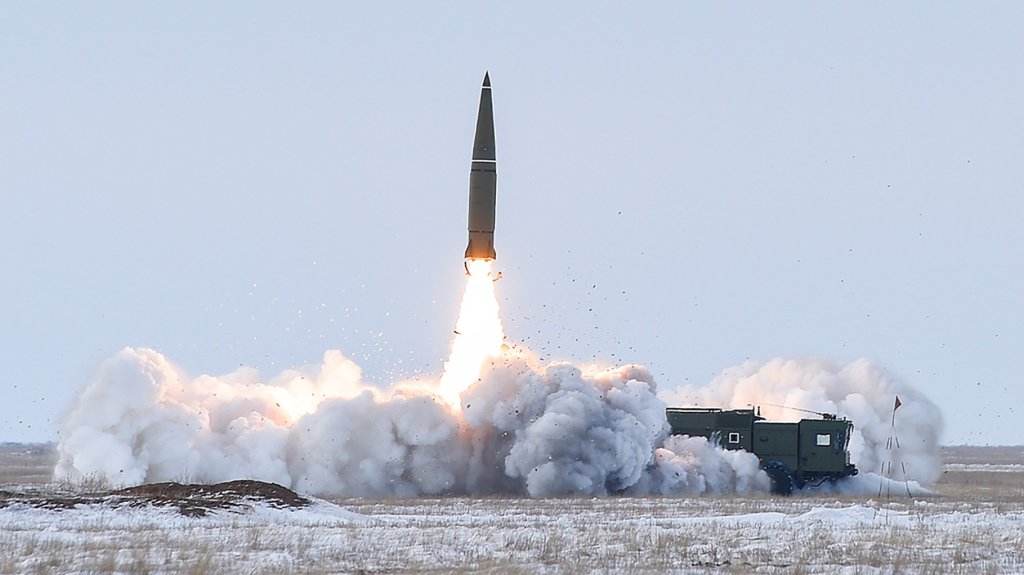 A Russian think-tanker suggests that Moscow send Havana missiles like the Iskander. (Russian MoD)
A Russian think-tanker suggests that Moscow send Havana missiles like the Iskander. (Russian MoD)
“This is about a symmetrical response to the potential supply of Tomahawks,” said Alexander Stepanov, a military expert with the Institute of Law and National Security at the Russian Presidential Academy of National Economy and Public Administration. “The ratified agreement maximally expands our military cooperation and allows, within the framework of bilateral interaction and in coordination with the government of the Republic of Cuba, to deploy virtually any offensive systems on the island’s territory.”
We are awaiting a response to Stepanov’s suggestion from the State Department.
The prospect of Ukraine getting its hands on the Tomahawk, which can strike targets at a range of almost 1,000 miles, carrying a 1,000-pound unitary warhead, has caused great jubilation in Kyiv, consternation in Moscow and raises real questions about how it would work. Ukraine does not possess the surface vessels, submarines or ground-based systems that can fire them.
There are multiple launcher options for ground-based Tomahawks now. These include four-round containerized launch systems derived from the Mk 41 Vertical Launch System that Lockheed Martin has developed for the U.S. Army and U.S. Navy. The U.S. Marine Corps had been in the process of acquiring single-cell Mk 41-derived launchers mounted on uncrewed versions of the 4×4 Joint Light Tactical Vehicle, but announced plans to cancel that program earlier this year. Lockheed Martin has also at least shown models of a two-cell Mk 41-based ground launcher in the past, as well.
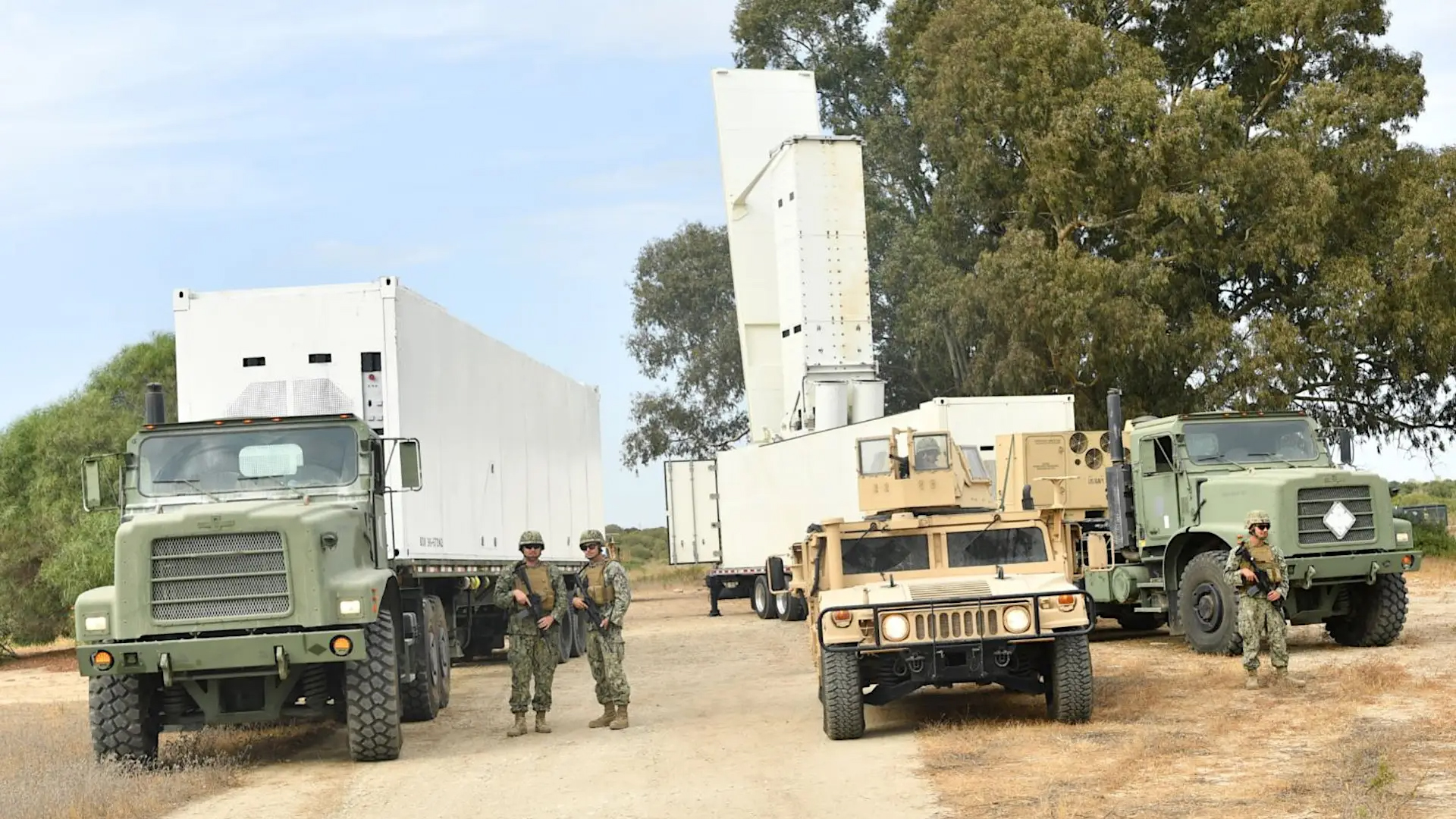 A containerized Mk 41 vertical launch system that is already in use by the U.S. military could be sent to Ukraine for firing the TLAMs. (DoD)
A containerized Mk 41 vertical launch system that is already in use by the U.S. military could be sent to Ukraine for firing the TLAMs. (DoD)
While Ukrainian President Volodymyr Zelensky has frequently requested TLAMs, Kyiv is producing its own long-range missiles.
In August, Ukraine unveiled a new ground-launched cruise missile, called Flamingo, which reportedly has a range of 1,864 miles (3,000 kilometers) and a warhead weighing 2,535 pounds (1,150 kilograms).
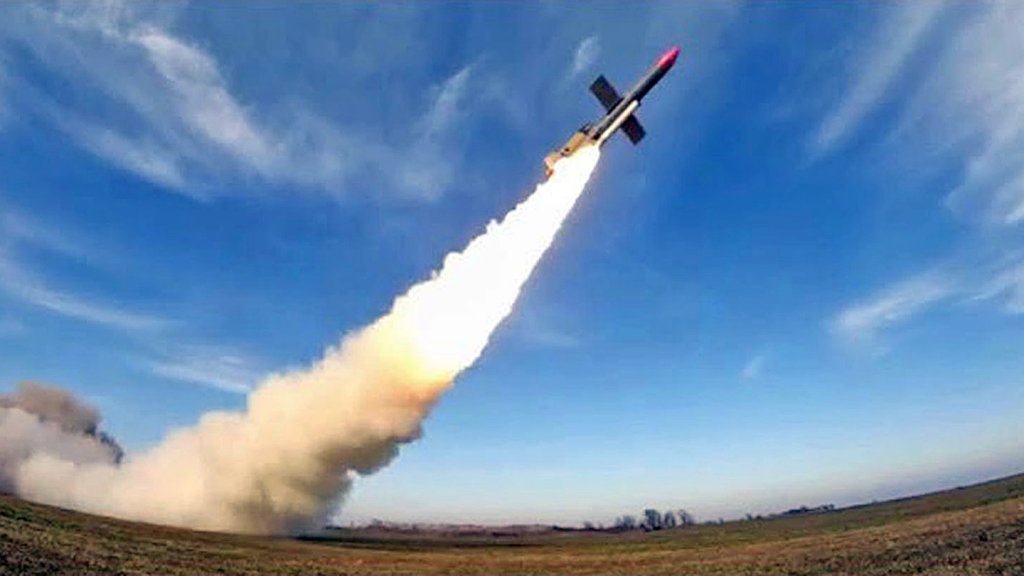 Ukraine has been using Flamingo, a ground-launched long-range cruise missile, on Russian targets, Kyiv claims. (via Ukrainska Pravda) via Ukrainska Pravda
Ukraine has been using Flamingo, a ground-launched long-range cruise missile, on Russian targets, Kyiv claims. (via Ukrainska Pravda) via Ukrainska Pravda
Earlier this week, Ukraine showcased a new version of its Neptune cruise missile, which appears to have added fuel tank ‘bulges’ for increased range; however, how far the missile can reach and with what kind of payload is unclear.
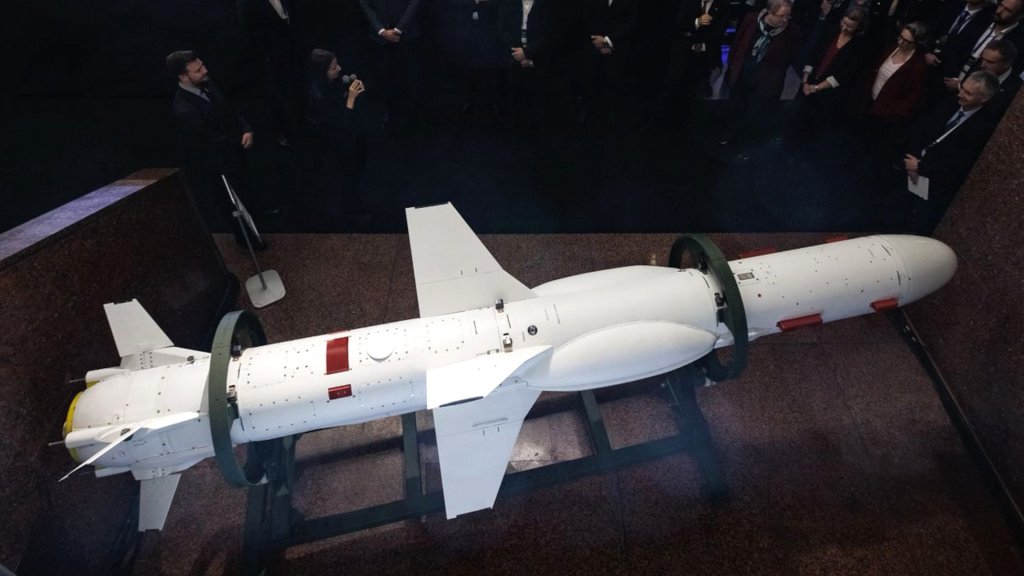 Ukraine has unveiled a new version of its Neptune cruise missile, which appears to have added fuel tank ‘bulges’ for increased range. (Denys Shmyhal/Ukrainian Ministry of Defense) Denys Shmyhal/Ukrainian Ministry of Defense
Ukraine has unveiled a new version of its Neptune cruise missile, which appears to have added fuel tank ‘bulges’ for increased range. (Denys Shmyhal/Ukrainian Ministry of Defense) Denys Shmyhal/Ukrainian Ministry of Defense
Zelensky claimed that both weapons have been used in tandem on unspecified Russian targets.
“Over the past week — I won’t specify in what quantity — our pair of Neptune and Flamingo missiles was used,” he said. “The corresponding results can be analyzed independently. We’re not saying it’s a mass deployment of this pair. We’re simply saying there has been use, and there are the first tangible results from this weapon of ours.”
While Zelensky offered no details, images emerged on social media claiming to be the remains of a Flamingo.
Speaking of weapons, Putin also hinted that he will soon introduce a new strategic one.
Asked about whether he is concerned if the U.S. fails to agree to an extension of a treaty limiting the number of nuclear warheads, Putin said it ultimately doesn’t matter.
“I believe that in the nearest future, we’ll have a chance to announce a new weapon,” he said without offering any details. “We spoke about it before, but now the tests are ongoing, which are successful.”
Putin once again provided no details. However, as we have reported in the past, Russia is developing exotic weapons like a nuclear-powered cruise missile and orbital nuclear weapons system.
Putin announced that Russia will soon reveal “new weapons”
According to him, Moscow “is not afraid” of the U.S. refusing to extend the New START treaty – in that case, Russia will “announce its new weapons.”
During his speech, Putin mentioned intercontinental missiles. pic.twitter.com/9Akdkt2rOz
— Visegrád 24 (@visegrad24) October 10, 2025
As of Friday afternoon, the question about whether the U.S. provides Ukraine with Tomahawks remains unanswered. So, too, are questions about how they will be used and what limits will be placed on the targets they can hit. Meanwhile, the two sides continue to pummel each other with the weapons they have.
Joseph Trevithick contributed to this report.
Update: 6:38 PM Eastern –
The State Department provided a comment about suggestions that Russia would send missiles to Cuba:
“For decades, Cuba has posed a national security threat to both our nation and our hemisphere. A recently signed military agreement between Cuba and Russia is another reckless step. We strongly oppose any modern military systems being sent to Cuba be they from Russia, China, Iran, or others. Under our America First foreign policy, we will ensure the safety of the American people.”
Contact the author: howard@thewarzone.com
Howard is a Senior Staff Writer for The War Zone, and a former Senior Managing Editor for Military Times. Prior to this, he covered military affairs for the Tampa Bay Times as a Senior Writer. Howard’s work has appeared in various publications including Yahoo News, RealClearDefense, and Air Force Times.
